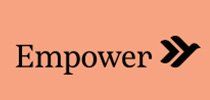What Percentage Of Your Money Should You Invest
How much money should you save, as a percentage of income? The 50/30/20 rule says to save 20% of your income. But it's not always so simple.
More than income or investment returns, your personal saving rate is the biggest factor in building financial security. But how much should you save? $50 per month? 50% of your paycheck? Nothing until you're out of debt or can start earning more money?
How much should you save every month?
Many sources recommend saving 20% of your income every month.
According to the popular 50/30/20 rule, you should reserve 50% of your budget for essentials like rent and food, 30% for discretionary spending, and at least 20% for savings. (Credit for the 50/30/20 rule goes to Senator Elizabeth Warren, who reportedly used to teach it when she was a bankruptcy professor.)
We agree with the recommendation to save 20% of your monthly income. But it's not always that simple to suggest the right percentage of income for YOU to save.
If, for example, you're a high earner, you'd be wise to keep your expenses low and save a much larger percentage of your income.
On the other hand, if saving 20% of your income seems implausible, or even impossible at the moment, we don't want you to get frustrated. Saving something is better than nothing.
But if you want a shot at being secure through old age—and having some extra cash for things you want—the numbers suggest that 20% is the number you'll want to reach or exceed.
Where should you save?
Opening an online savings account is a great way to start saving. You'll find some of the best rates online (vs. brick and mortar) and accessing your funds can be done from anywhere in the world.
Ready to start saving? Compare today's top saving account rates and open one today!
 One financial services app is Chime, and there are a dozen reasons they have distinguished themselves in the financial world.
One financial services app is Chime, and there are a dozen reasons they have distinguished themselves in the financial world.
The 0.50% APY applies to all balances and there is no minimum deposit requirement or minimum balance requirement to earn interest. All deposits are FDIC insured, up to the $250,000 personal maximum.
In addition to the high yield APY (which is about the best rate you can find online today), Chime puts forward a lot of other tremendous and unique features:
- Spot Me – No overdraft fees when you draw on a zero balance. Chime will cover you and simply pay back the negative balance when you make another deposit to cover the difference.
- Early Direct Deposit – Set up direct deposit and get paid a few days earlier than most of the people at your office.
- Round Up Transfers – Every time you make a purchase with Chime, you can have them automatically round up your purchase and have the added funds transferred into your savings account. 30 cents here, 60 cents really starts to add up.
Last but not least, Chime boasts more than 38,000 fee free ATM's to use. They combine two large networks,so you shouldn't have any trouble being close to an ATM to withdraw your cash for free.
Chime Disclosure - Chime is a financial technology company, not a bank. Banking services provided by, and debit card issued by, The Bancorp Bank or Stride Bank, N.A.; Members FDIC.

Another enticing option is Aspiration , a purpose-driven brand that offers up to 1.00% APY (Variable) if you go with their Aspiration Plus account; you'll pay $7.99/month or $5.99/month if you pay annually. You'll need an opening deposit of $10 but after that, there's no minimum balance requirement.
If you prefer, Aspiration offers a regular plan where you choose a monthly fee – whatever you think is fair, but you won't earn interest on your savings.
Still, Aspiration gives you plenty of great perks that can help you set some money aside each month. Here are just a few:
- Cash back – You'll get cash back on your everyday purchases, starting with 0.5% back at Target, Walmart, and CVS. Purchases at popular retailers like Warby Parker and Blue Apron can get you 3% to 5% cash back. Earn up to 10% with Plus while hopping at eligible socially-conscious merchants.
- Welcome bonus – When you have Aspiration's fee-free account, spend at least $1,000 in your first 60 days and you'll get a welcome bonus of $150. If you have Aspiration Plus, spend at least $1,000 in your first 60 days and you'll get a welcome bonus of $200.
- No-fee ATM withdrawals –Use your card at 55,000+ AllPoint ATMs across the globe and pay no fees. That's more than Citi, Chase and Bank of America combined.
But where Aspiration really stands out is with its mission-driven features. With every enabled swipe of your debit card, Aspiration will plant a tree. Aspiration Plus also provides carbon offsets for all your fuel purchases.
Why 20%?
According to our analysis, assuming you're in your 20s or 30s andcan earn an average investment return of 5% a year, you'll need to save about 20% of your income to have a shot at achieving financial independence before you're too old to enjoy it.
Here's the thing: If you want to work like a dog every day until you die, maybe you don't need to save all that much. Sure, you'll still want an occasional vacation and something in an emergency fund in case your car coughs up a radiator.
Beyond that, however, we save so that one day we no longer have to work for the money. For most of us, that day won't come for many decades, but there are regular working people who reach it as young as 40 or even 35.
What are you saving for?
True financial independence means that you can sustain your chosen lifestyle entirely from your investments' interest and dividends.
How much money do you need to save to do that?
Good question. The simple answer: It all depends. It depends on whether you're willing to live at the poverty line, need two homes and a sailboat, or fall somewhere in between. It also depends on how well your investments perform. If you can earn an average annual return of 7% on your money, you can stop working with a lot less than if you only earn 3%.
For simplicity's sake, we'll use the common "4% rule", which states that, theoretically, you could withdraw 4% of your principal balance every year and live on this indefinitely. That means that you'll need to save 25 times your annual expenses to become financially independent. (If the math doesn't shake out for you, remember 25 x 4 is 100, and 100% = your total balance.)
There are problems with the 4% rule, of course. For one, there are no risk-free investments that yield anywhere close to 4% today. Sudden inflation could also become a problem. To account for this, and for simplicity's sake, we'll base how much you need to save based on your gross (before tax) income not your expenses.
In our example, we assume that you want to save 25 times your annual income, rather than your annual expenses. By default, you'll actually be saving more than you need (because once you're financially independent you could stop saving). But when discussing your source of income for the rest of your life, it's best to be conservative.
How long will it take?
The chart below shows how long it will take you to amass 25 times your income based upon the percentage of your income you save. (We assume a 5% average annual return to account for a more aggressive asset allocation while you're saving.)
| % of Income Saved | Time Required To Save 25x Annual Income |
|---|---|
| 1% | 100 years |
| 2% | 86 years |
| 5% | 67 years |
| 10% | 54 years |
| 15% | 46 years |
| 20% | 41 years |
| 25% | 37 years |
| 50% | 26 years |
| 75% | 21 years |
| 90% | 19 years |
As you can see, by saving 20% of your income you'll hit 25 times your annual income in just over 40 years. That means a 30-year-old who starts saving today (assuming no prior savings) will hit this target by 71. If you save less than 20%, it will simply take too long for your money to grow to a point where it will allow you to live off just interest.
It's not that scary, we promise!
Remember that you only need 25 times your annual expenses, not your income, to become financially independent. The lower you keep your expenses, the sooner you'll achieve your personal savings goal. Also, our savings chart doesn't take taxes into account.
Tax-advantaged accounts can help
For simplicity, our chart looks at before-tax money going in, assuming that you'll pay taxes on the money coming out. But tax-sheltered retirement accounts like 401(k)s and IRAs change that equation for the better.
If you take advantage of these accounts, you can get away with saving 20% of your net, or after tax, income.
If you qualify for a Roth IRA, use it! Money you contribute to a Roth IRA now comes back to you tax-free when you're older, so the more you save in a Roth, the less you'll need to save in total because you won't have to pay taxes on the Roth withdrawals in retirement.
Contributions to a 401(k) will also help ease the pain of reaching a 20% savings rate, according to a TIAA-CREF blog focused on millennials.
TIAA-CREF assumes you can take advantage of at least a 5% match from your employer when you put money into a 401(k). This means you'll really only need to save 15% of your paycheck.
Plus, if you are putting money into a 401(k), this money will be deducted from your paycheck before taxes which means that each dollar you deduct will save you some after-tax cash.
Getting to 20% —an example
Let's say you make $1,200 every two weeks. After taxes, it's $1,000. Your savings goal should be 20% of net (after-tax) income, or $200 from every paycheck.
If you make a pretax contribution to a 401(k) of 5% of your paycheck and it's matched by your employer, that means you put aside $60 from your check before taxes (and your employer kicks in another $60). That's $120 into your retirement account every month, and your after-tax paycheck is only reduced to $969.
You still owe yourself $80. You could put half into a Roth IRA for additional retirement savings and the other half to build up an emergency fund. What you do with it doesn't matter as much as the fact that you saved it at all.
This means, after all that saving, your take-home income is still $889 every two weeks, which is only about 11% less than your previous paycheck of $1,000. By taking advantage of your employer match and pre-tax deductions, you managed to almost double your savings rate. Talk about bang for your buck!
Between pretax savings and employer matching, saving 20% of your paycheck gets a bit easier.
Calculate how much you can save:
What if I just can't save that much?
Don't stress. Saving something is better than nothing.
I can already hear the shouts from the comments: "How ridiculous! I spend almost everything I earn, and on rent, food, and transport! This website is out of touch with its audience!"
Okay, okay. If the 20% scenario I just sketched out doesn't fit your situation (which is going to be unique to you), then please don't think that I'm saying you're a failure or a chump. Like I said, we believe everyone should aim for 20%, not that everyone should hit that target on their first try.
Start small. Start with 1%. When that doesn't sting so bad, go up to two, or even three. Maybe you hit 5%, and that feels pretty good. Maybe you take a crazy leap for 10%, and that leaves you stressed and strapped, so you scale back. It's a process, a literal give and take.
Through it all, keep that 20% goal in mind. It'll keep you from getting complacent. Whenever you get a raise, raise your saving rate! You were doing fine without that money before, and you shouldn't miss it if you never get used to having it.
Finally, if you're in debt, you might already be saving more than you think. That's because paying down debt is essentially saving in reverse.
Think of it this way: One day, you're debt-free. But you've been making big monthly payments to your debts for years. If you suddenly begin to save that money, what would your saving rate be?
 If you can't save 20% every month, another option is an app like Empower that automatically sets money aside for you.
If you can't save 20% every month, another option is an app like Empower that automatically sets money aside for you.
All you have to do is tell Empower how much you want to save, and Empower will start analyzing your income and daily expenses. If you have extra money, Empower will send it to savings, but during the months where your expenses seem to be taking over, Empower will move less over. The app will do all the heavy lifting for you, letting you focus on controlling your spending.
Empower is a financial technology company, not a bank. Banking services provided by nbkc bank, Member FDIC.
Also, try investing
If you can't save a good chunk of your paycheck every month, investing once (for right now) can help you start saving over the long run.
One investment platform option is Betterment.
Betterment claims they're the "simplest, smartest way to invest," and that they are. WithBetterment your money will be automatically invested in index funds. But first, Betterment will ask you a series of questions to help determine your goals and risk tolerance.
You're probably wondering: how much do I have to pay for all this? Actually, not as much as you might think. Betterment's fee is simple – 0.25% of your total portfolio. Compared to traditional brokerage firms, this is a whole lot less.
To get a better understanding of all that Betterment has to offer, here's our full review.
I hit 20%—what's next?
Keep going! As long as you're not depriving yourself today, it's difficult to save "too much".
Take the same advice we gave to those who are struggling to hit 20%: Test your limits, and try to increase them. Building up strength (either physical or financial) takes discipline and consistency, as well as a willingness to listen to your body (or your bank account) when it tells you your current regimen is just too intense.
But saving more is definitely a good idea. Retirement experts say that the traditional recommendation of 15% of income is honestly too low to guarantee a comfortable retirement, and that 25 or 30% is a safer bet.
Also, keep in mind that if your goal is to retire early or someday leave a well-paying but high-stress job, your savings rate will likely need to be 50% or more. This may seem impossible, but it might give you pause when making major financial decisions like deciding how much house you can afford or what kind of car to buy.
The most important thing is to start saving. How much will vary from person to person, as well as from year to year. The best savings philosophy, in keeping with our sports metaphors, comes from Nike: Just do it.
Read more:
- How to save your first $100,000
- Are You Saving In the Right Place? Take Our Quiz To Find Out
Related Tools
Save Your First - Or NEXT - $100,000
Sign Up for free weekly money tips to help you earn and save more
We commit to never sharing or selling your personal information.
What Percentage Of Your Money Should You Invest
Source: https://www.moneyunder30.com/percentage-of-income-should-you-save-every-month
Posted by: handhadeventing.blogspot.com

0 Response to "What Percentage Of Your Money Should You Invest"
Post a Comment